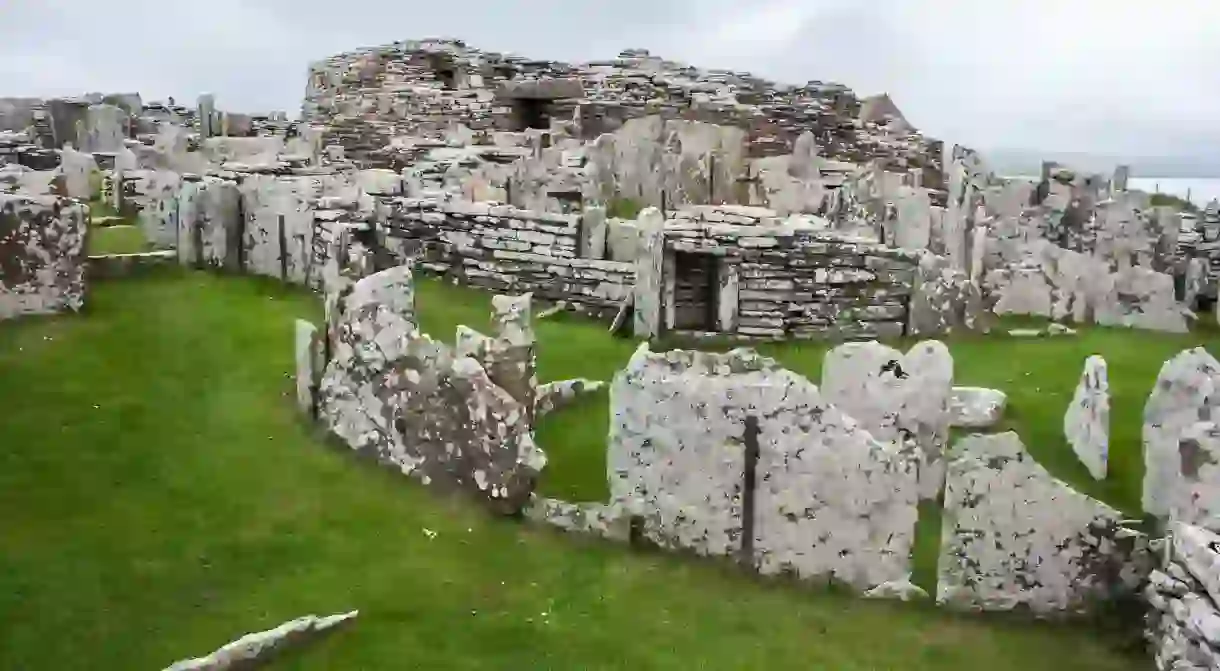Why This Tiny Scottish Island Is Known as the ‘Egypt of the North’

Edinburgh may be crowned the ‘Athens of the North’, but Scotland’s capital isn’t the only showstopper of a destination. For a small island, Rousay is bejewelled with a surprising share of globally important archaeological sites – over 160 to be precise! Each with a tale to divulge, it’s no wonder that this Orkney island is known worldwide as the ‘Egypt of the North’.
Rousay, with its congregation of hills and freshwater lochs, lies north of Orkney’s Mainland with only the Eynhallow Sound between the two places. Thronged with colonies of wildflowers, rare birds and contoured cliffs, this tiny paradise has one lone circular road and a population of around 230.
As with every Orkney island, however, all you have to do is scratch the surface, and it will bleed history. And none deliver the archaeological goods quite like Rousay.

Midhowe Cairn is a multi-chambered burial structure dating back to around 3500 B.C. and the longest and largest cairn in all of the Orkney Islands. The well-preserved Midhowe Broch, an impressive fortified Iron Age residence occupied from about 200 B.C. to 200 A.D., is another key site that lurks nearby.

Also peppered around the historical landscapes are endless reminders of Viking and Pictish times, just as the cluster of abandoned old farms and churches speak volumes about the Highland Clearances that plagued Scotland during the 19th century.
One of the best ways to unearth Rousay’s thriving and diverse archaeological scene is through the Westness Heritage Walk, a rough coastal trail dotted with bucolic bliss and Scotland’s most important archaeological mile. Every site is completely free to visit, which only adds to the magic.

Living up to its deserved ‘Egypt of the North’ title, Rousay is well accustomed to being fawned upon by leading international archaeologists and historians, each desperately trying to grasp the wealth of knowledge that awaits.
In a bid for even more answers, a new team of archaeologists have descended upon Scotland’s miniature Egypt to conduct a major international study. Working with experts from the University of the Highlands and Islands, the renowned Berlin-based group from the Deutsches Archäologisches Institut Römisch-Germanische Kommission (DAI) will implement the largest geophysics survey of the island ever to take place.

The results gained using state-of-the-art geophysics technology will help add even more substance to the ‘Boyne to Brodgar’ programme, a research project geared at unravelling age-old narratives through studying Scottish and Irish Neolithic communities along with their monuments.

Perhaps the most exciting aspect is that there’s no telling what the researchers will stumble upon next – new sites emerge from Rousay’s shadows more often than people expect, with the most recent being a potential Iron Age settlement looking out to the sea at Swandro.
While Orkney’s Rousay may not have pyramids, Scotland’s own ‘Egypt of the North’ just so happens to be dripping in a wealth of globally important ancient archaeological sites, each with a tale to utter if you look closely enough.

Planning a trip to Orkney? Check out the best historic sites and most stunning places to discover why the Orkney Islands are worthy of every bucket list.













